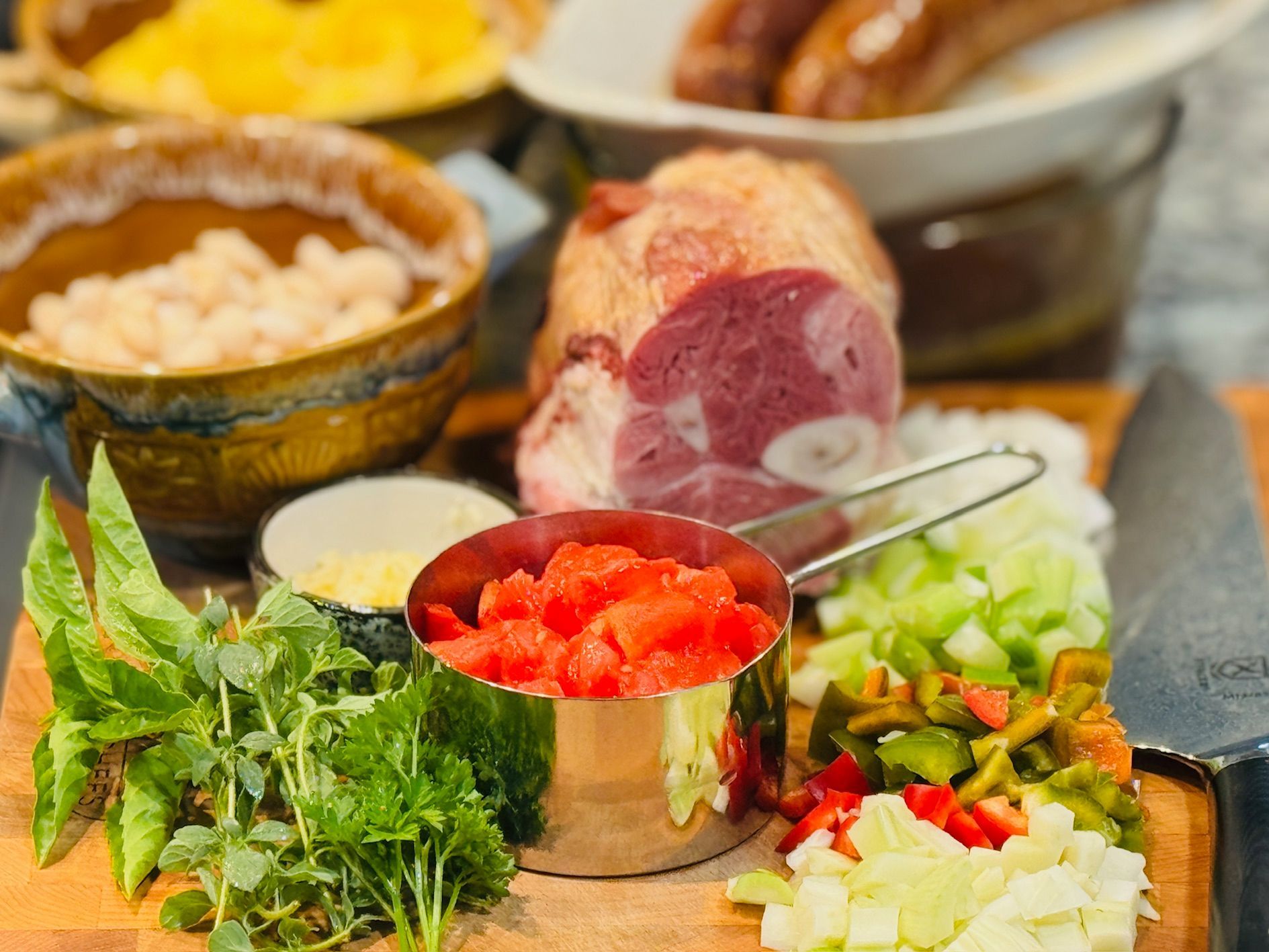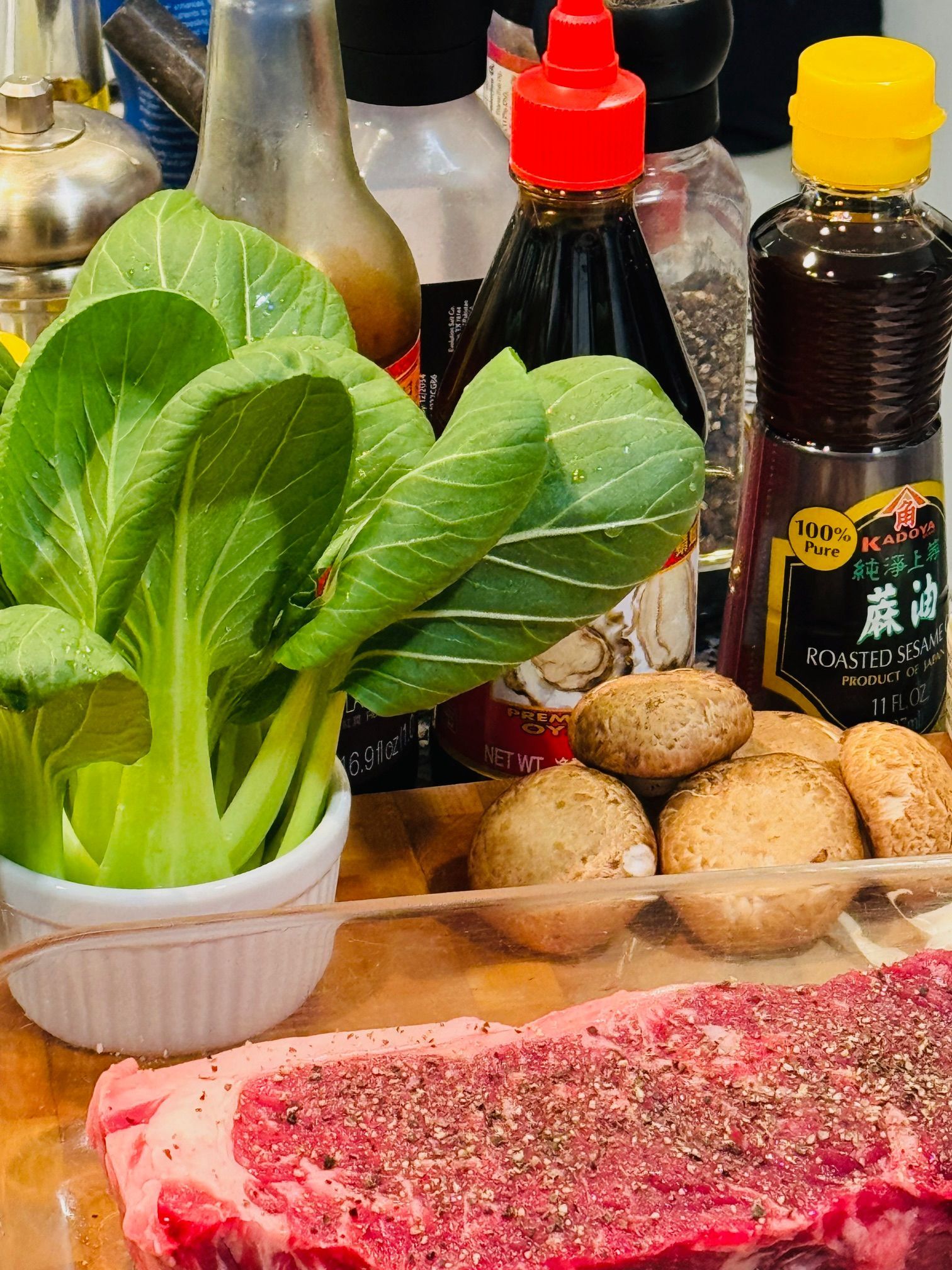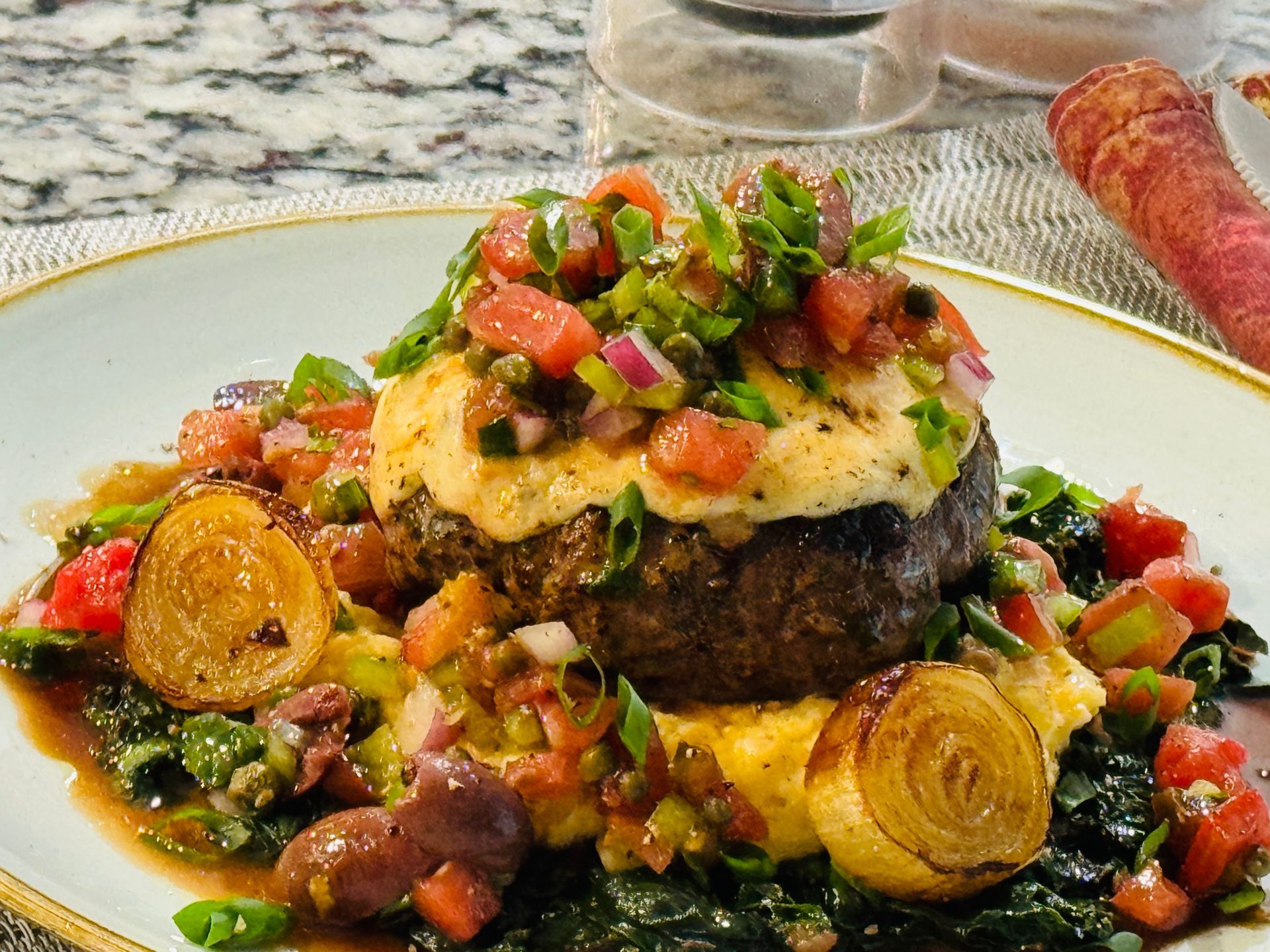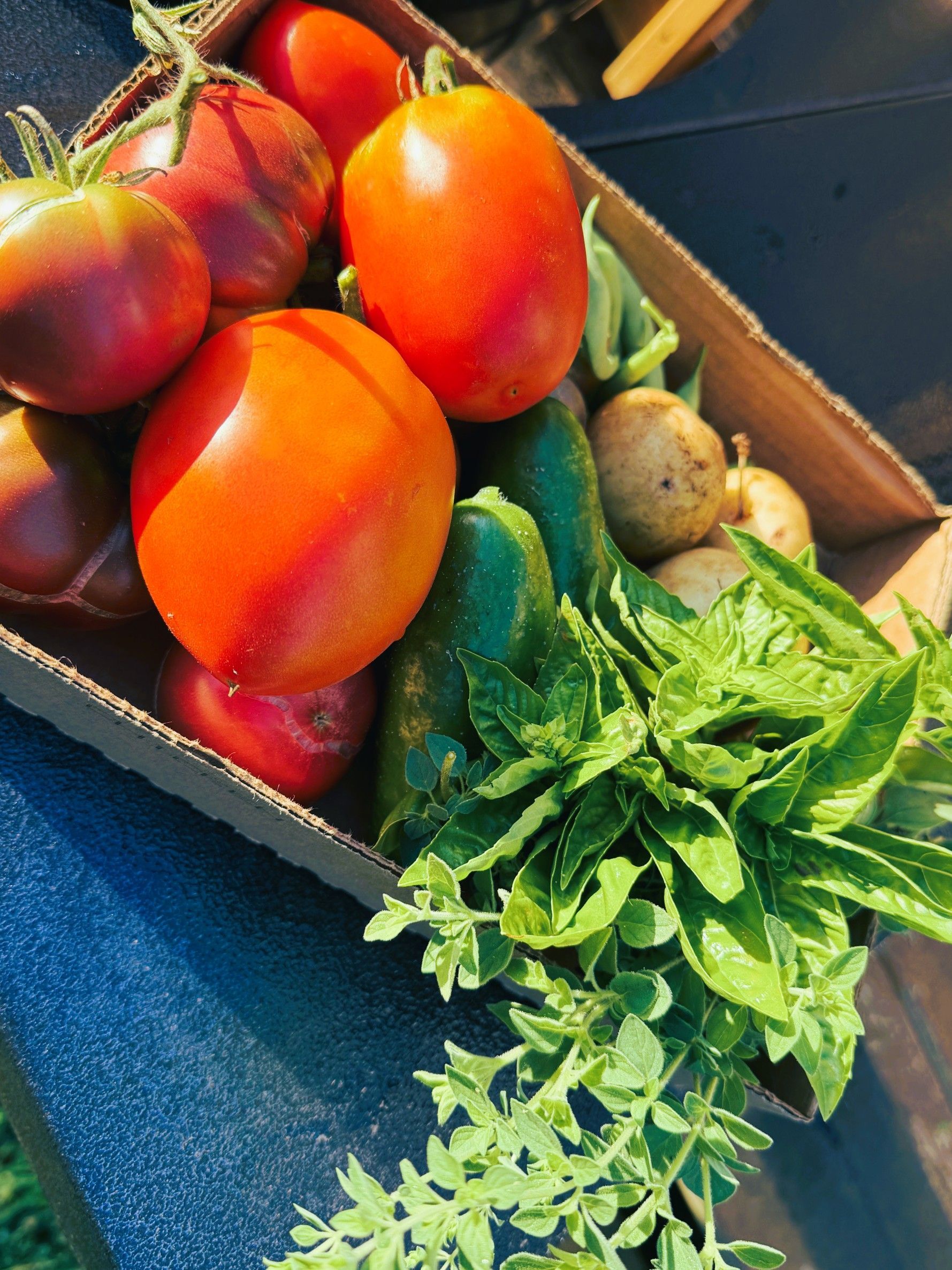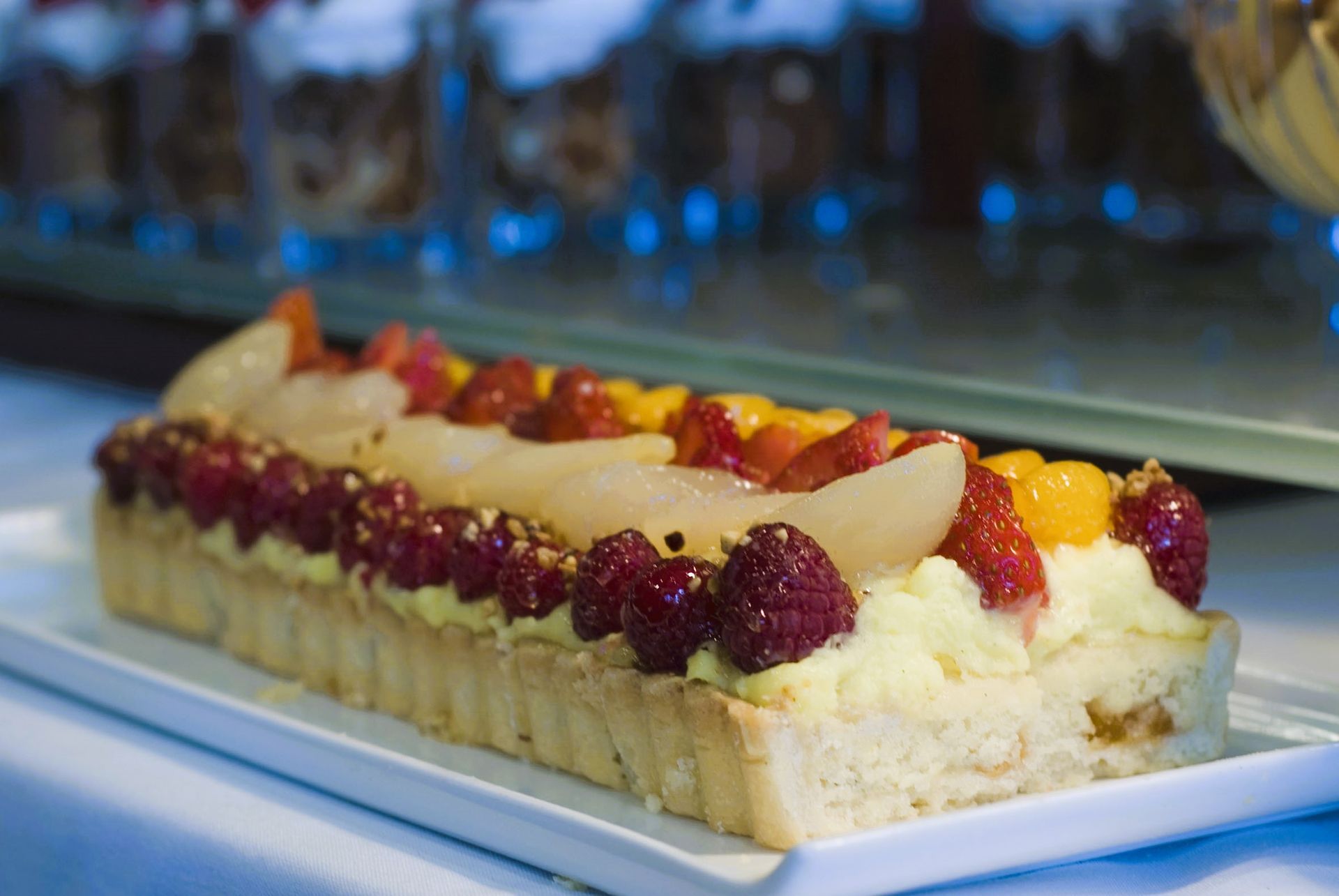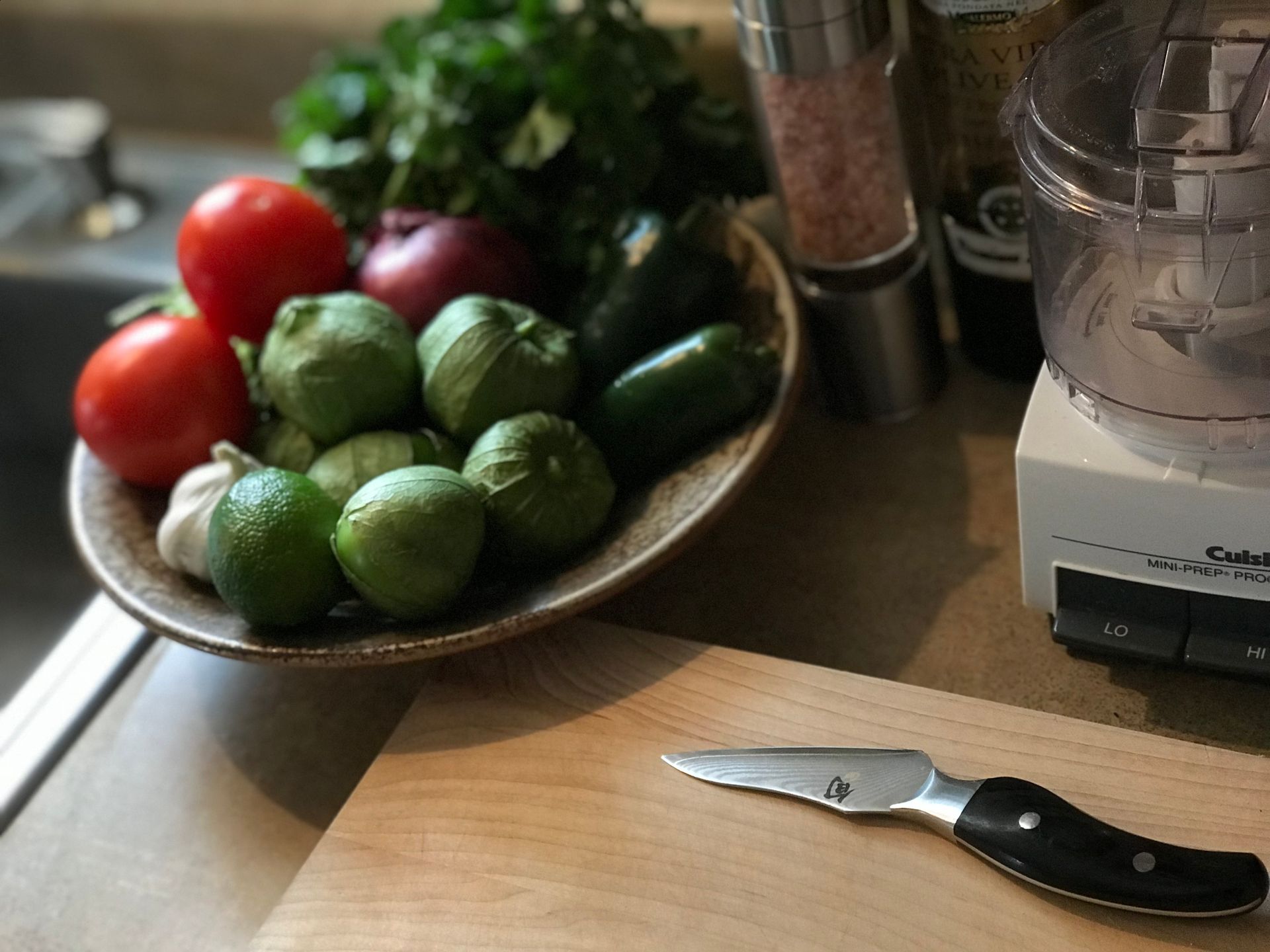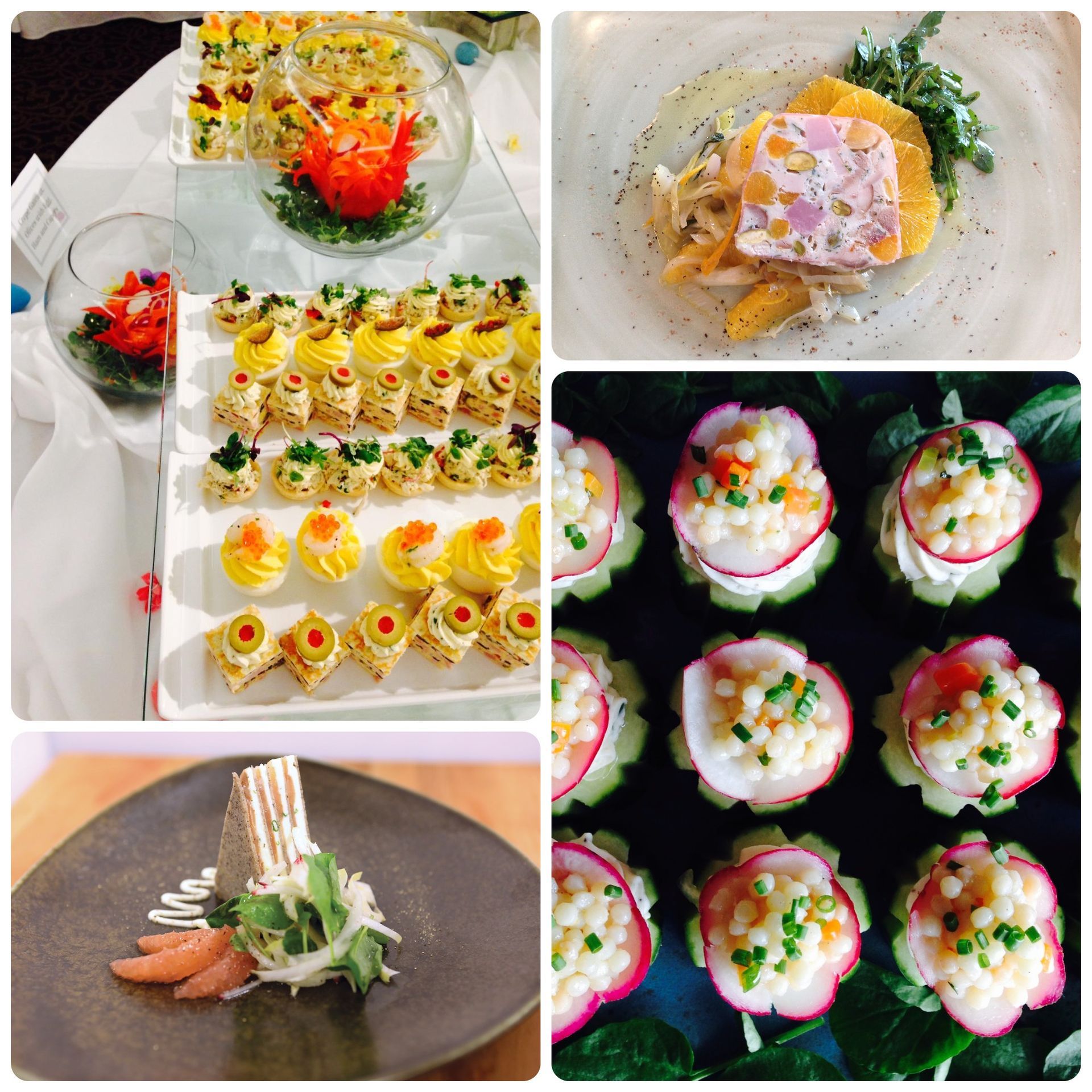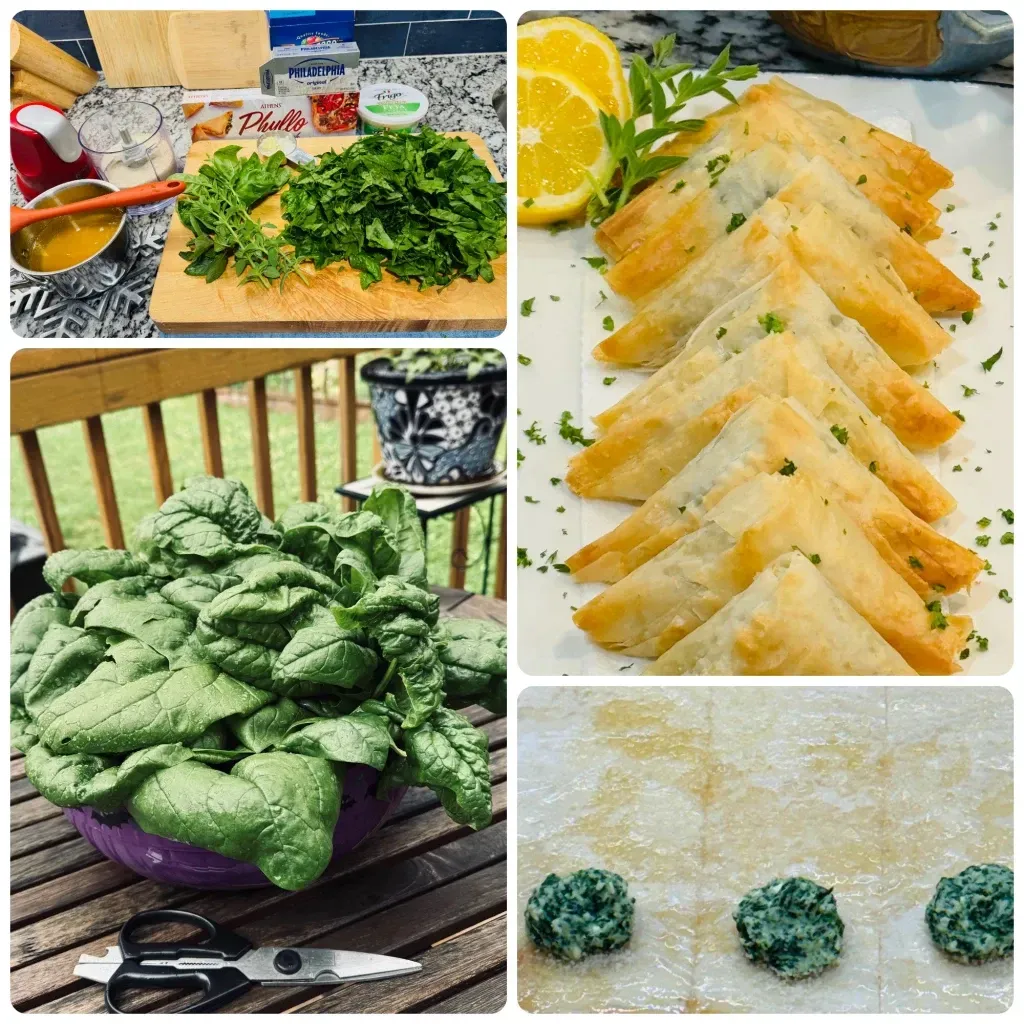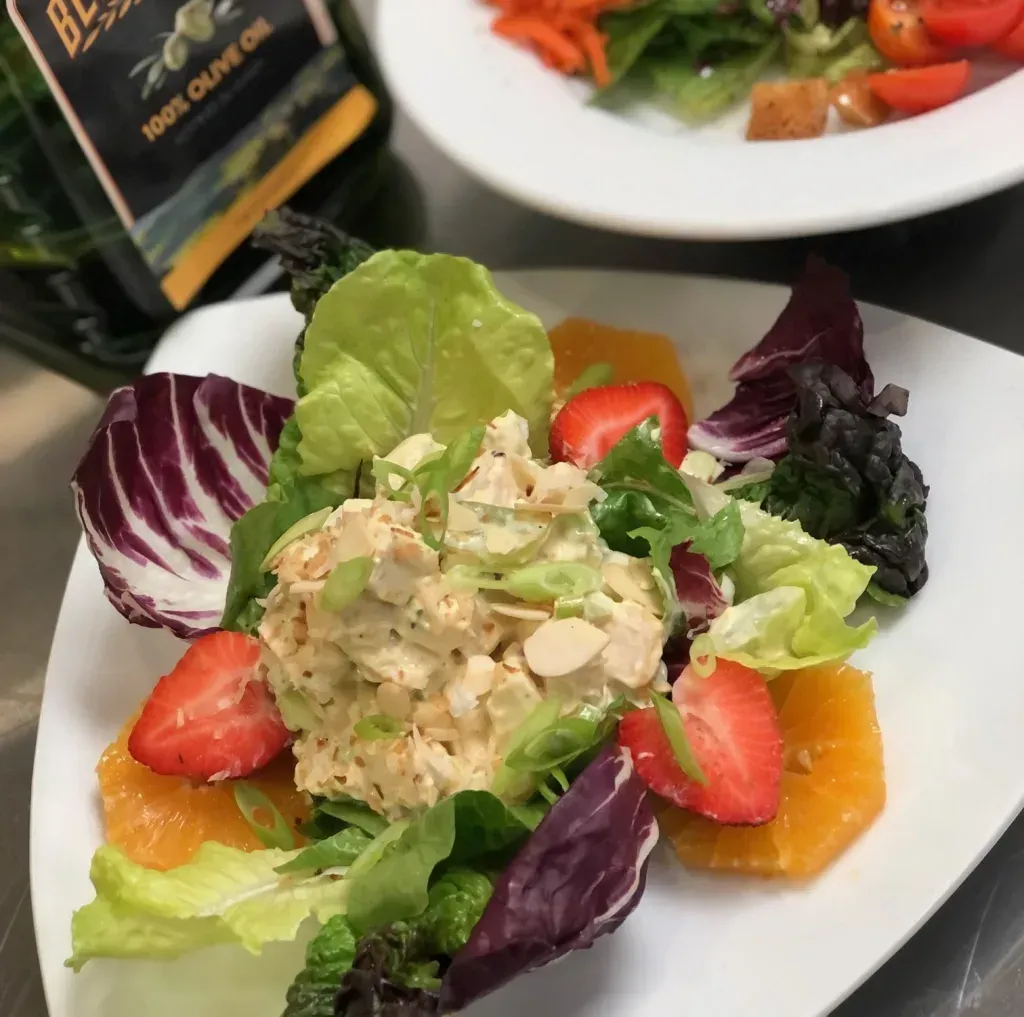Seven Interpretations of Classic French Cuisine
Chef cooking tips, cooking, Culinary and Pastry Arts, healthy cooking, Seafood
Seven Interpretations of Classic French Cuisine
Classical haute cuisine with an emphasis on French techniques is the subject of cooking textbooks that are used in all culinary schools in the USA. In many areas, French restaurants are not as prevalent as many other styles of restaurants; however, the majority of fine dining restaurants still use classic techniques in modern applications in…
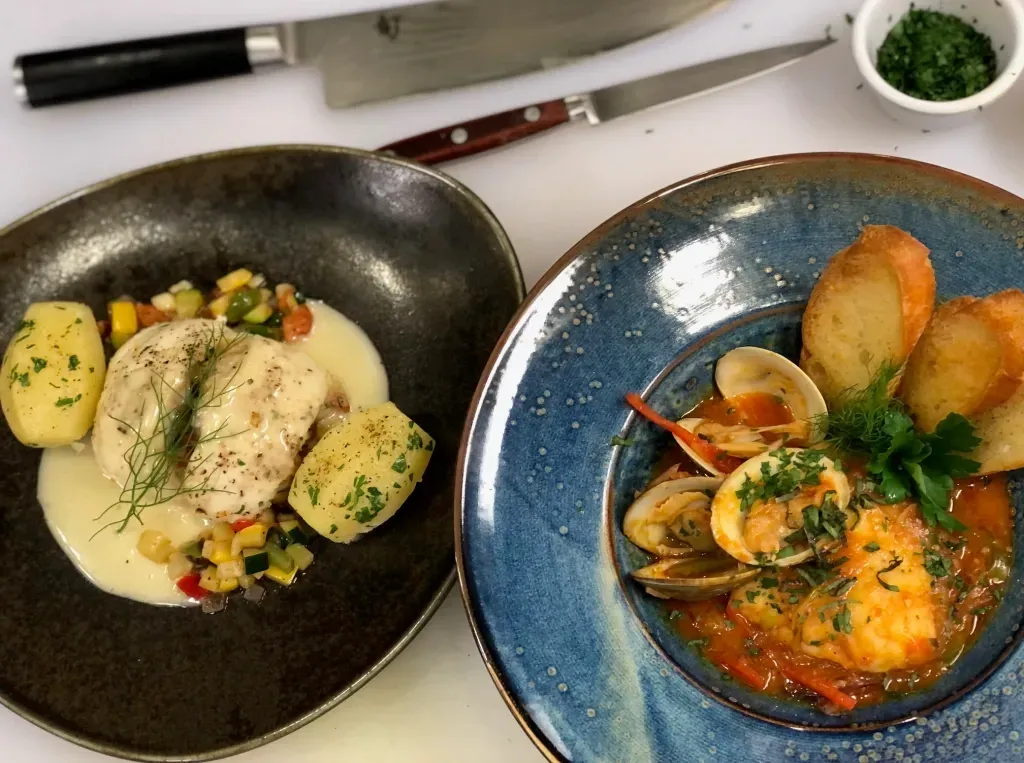
Fin Fish lab with Stuffed Sole with Shrimp, Scallops, and Italian Vegetables with Pernod Beurre Blanc and Black Sea Bass with Little Neck Clams in a Tomato Fennel Broth.
Classical haute cuisine with an emphasis on French techniques is the subject of cooking textbooks that are used in all culinary schools in the USA. In many areas, French restaurants are not as prevalent as many other styles of restaurants; however, the majority of fine dining restaurants still use classic techniques in modern applications in their cooking. The philosophy that I try to instill in my students is to use the recipes and methods that are found in the classical realm in ways that would sell in fine-dining restaurants today. I tell them that classics became classics for a reason in culinary or any other genre. That is because they are popular with the majority of people and have stood the test of time. In the culinary field, they have been reproduced by many great chefs past and present. All top chefs who are known for excellence in their cooking use classic techniques, methods, and composition in combining ingredients, because they are just as popular today as when they were first prepared often decades if not centuries before. The principles that are used in classical cooking are also applicable to home cooking as well as in fine dining establishments.
Here are seven dishes from my demonstrations in this past semester’s culinary labs. They were examples from three of this semester’s classes that I taught: Culinary 101, Soup and Sauces, and Fabrication. During my career as a working Executive Chef in private clubs and hotels, I used many of these recipes and presentations to great success and received rave reviews and feedback from the diners that consumed them. I tell my students that each one of these dishes or the components used in these plates can also be prepared in the home kitchen as well.
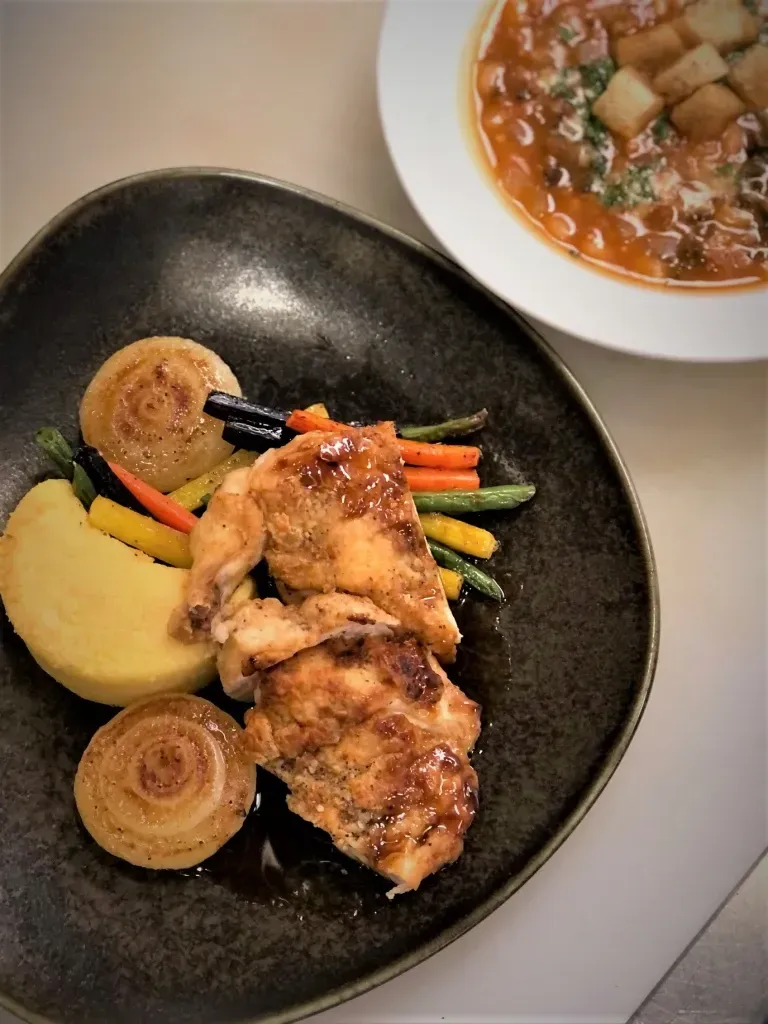
This image is from my soup and sauce class. On this day we prepared Tuscan-style white bean and kale soup along with sauteed airline chicken breast with a pan sauce. The sauce is made with a classic reduction of chicken stock known as a Glace de Viande or more precisely Glace de Poulet. Finished with Maderia and mounted with butter. I accompanied it with a type of Gnocchi made with semolina flour in the Roman style – Gnocchi Romain.
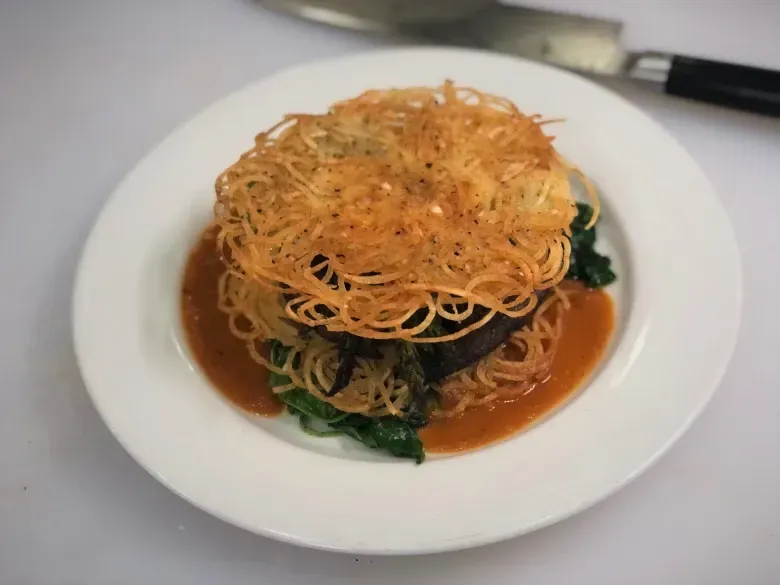
Here is another dish from my soup and sauce class. This one is a vegetable Napolean that is layered with spinach, grilled portabello mushrooms, asparagus, mashed potatoes (pomme mousseline), and crispy disks of spaghetti-cut Idaho potatoes. The sauce is roasted tomato coulis. Coulis is a classic type of sauce today mostly prepared as a puree of berries, in old times the sauce had a very different meaning and was made with meat.
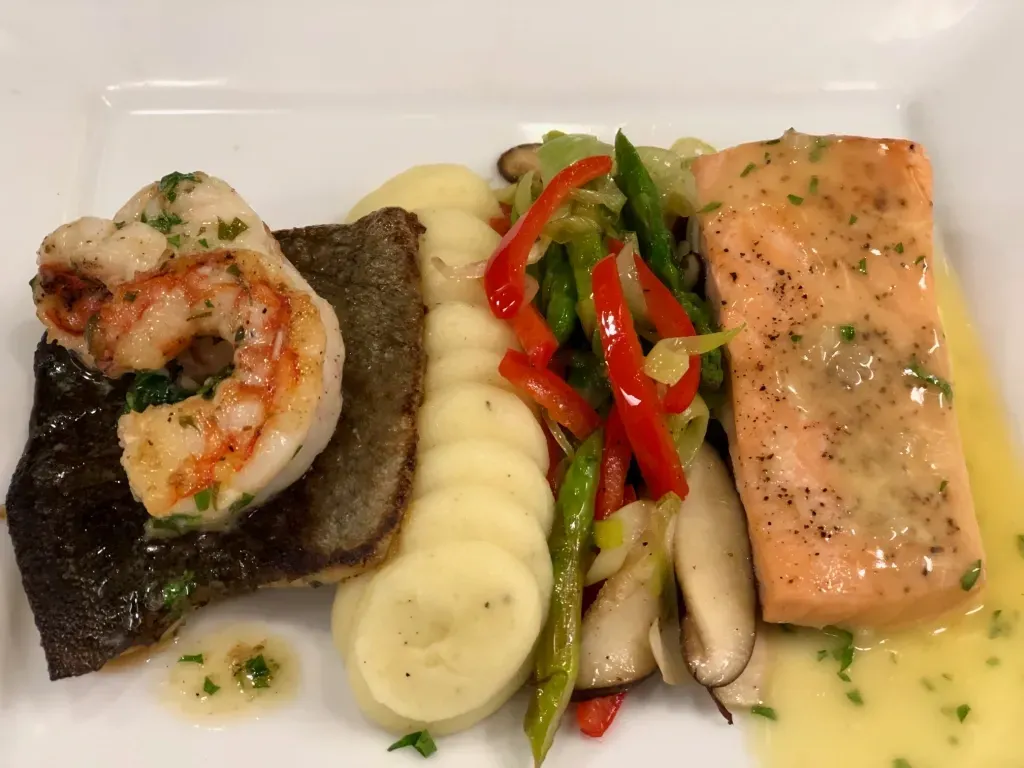
In this 101 class, seafood was the lesson. It was one of the last classes of the semester. It featured crispy skin trout, garlic shrimp, and oven-poached salmon with a butter sauce made from the poaching liquid (cuisson). This dish would be called a seafood medley in a fine dining environment. In that case, I would use a more expensive fish such as red snapper or sea bass instead of trout.
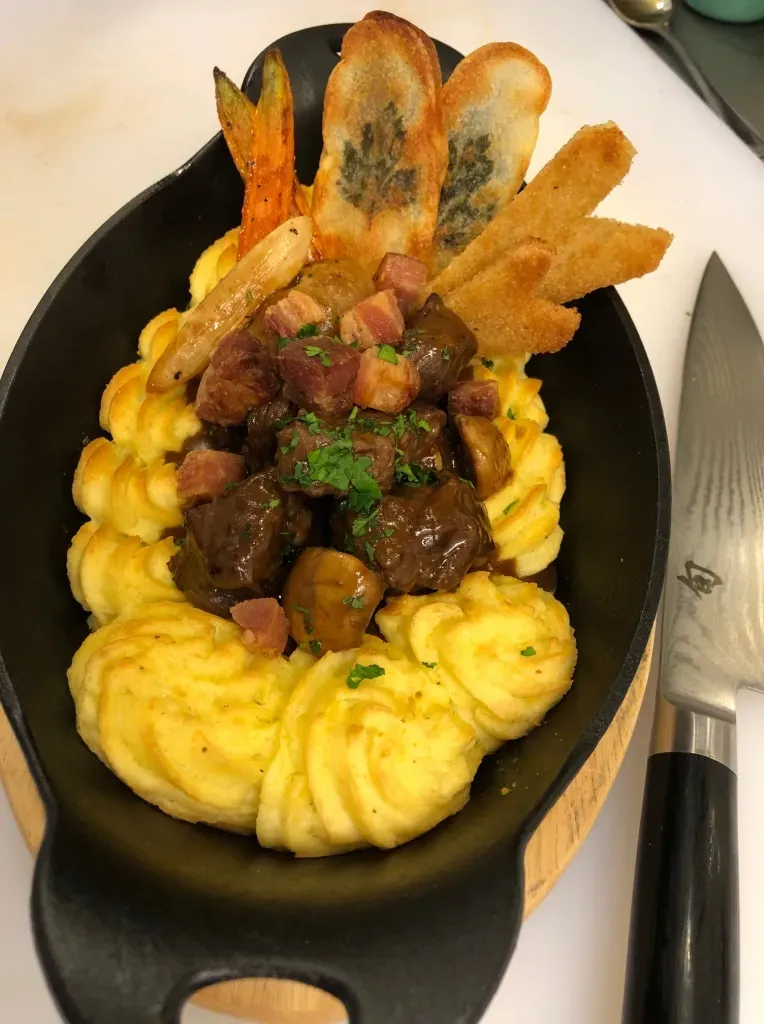
Classic rustic Beef Bourguignon (Burgandy Beef) is a bistro favorite. Here is a way to present it with the classic potato preparation called Pomme Duchess. I elevated the dish with garnishes of bacon lardons, heart-shaped croutons, crispy layered potatoes inlaid with flatleaf parsley, and roasted baby carrots. Due to its aesthetic appeal, when served in a cast iron dish along with these garnishes this method of presentation could garner a higher price in a restaurant when compared to serving it alone in a bowl.
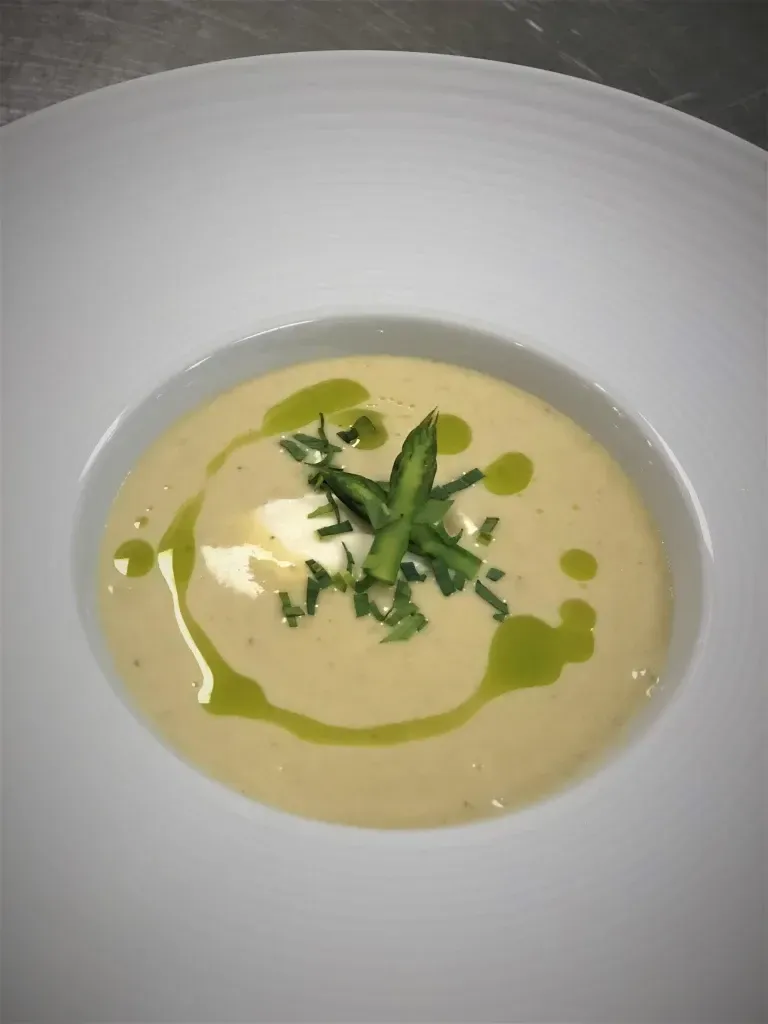
This is a cold soup fashioned after the classic potato leek soup, Vichyssoise. In my career as an Executive Chef, we often served high-volume banquets with asparagus leaving us with enormous amounts of leftover stems. So I adapted the classic Vichyssoise by chopping the stems and adding them to the cooking process along with leeks and potatoes before pureeing and straining the soup. I used to serve it hot or cold. When I serve it cold I would garnish it with goat cheese mousse and chive oil. A delightful chilled soup on a hot summer day. Here is my recipe:
Asparagus, Leek, and Potato Soup
Yield: 1 gallon
| 1 quart | Asparagus stems, chopped fine |
|---|---|
| 1 cup | Leek with light green stalk only, chopped |
| ½ cup | Celery, chopped |
| ½ cup | Onions, chopped |
| ½ cup | Butter |
| ½ cup | Flour |
| 1 ½ tsp | Tarragon, chopped |
| 1 TBL | Basil, chopped |
| 1 TBL | Chives, chopped |
| 1 cup | White potatoes (Yukon Gold or Idaho), peeled and diced |
| 5 cups | Vegetable or chicken stock (hot) |
| 1 quart | ½ and ½ |
Garnish: Asparagus, chives, diced potatoes
For cold soup omit the diced potatoes in the garnish and top with goat cheese mousse, blanched asparagus tips, chives, and chive oil.
- Melt the butter in a heavy sauce pot
- Add the onions, celery, leeks, and asparagus and saute until translucent and tender over medium heat
- Add the flour and stir in to make a roux
- Add the ½ and ½ and cook to form a bechamel reduce the heat to low and cook for 5 minutes while stirring
- Add the hot stock and continue to cook while stirring occasionally for at least 20 minutes, do not allow it to boil.
- Add the herbs, and potatoes and cook until the potatoes are tender
- Blend until smooth (if to thin return to the stove and thicken with a cornstarch slurry, if too thick add more stock, cream, or half and half)
- Strain and season with salt and white pepper if needed
- Garnish and serve or chill, garnish and serve.
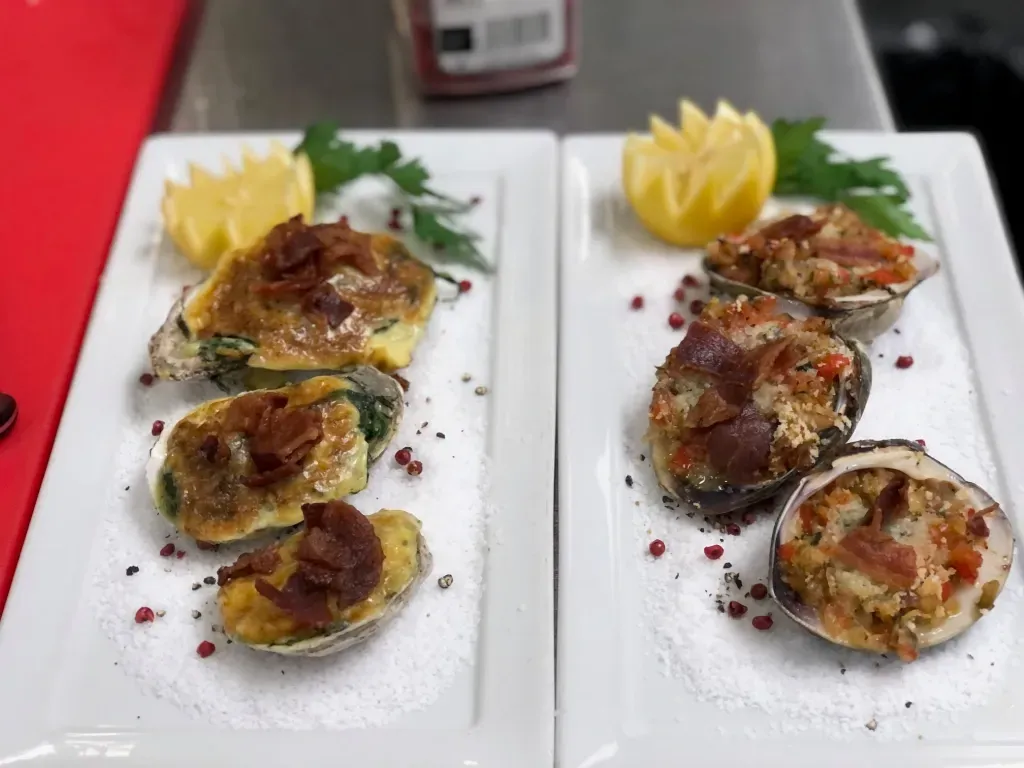
This class was from a lab in my fabrication class which featured two baked shellfish dishes, Oysters and Clams. On the right is the New Orleans classic Oysters Rockefeller next to my version of the favorite – Clams Casino. I prepare the clams in a more elaborate way than the traditional style. I make it by cooking the clams with wine and shallots and then removing them from the shells and chopping them up. From the cooking liquid, I then prepare the sauce cooking it down with a concasse of tomatoes, red bell peppers, leeks, fennel, and herbs. After I mix it with the chopped clams and refill the shells I topped it with garlic butter, bread crumbs, and bacon. At service time I broil the clams and serve them on kosher salt.
I hope you can glean some ideas using classical French-style cuisine from this post in your cooking either at home or in a commercial kitchen. Until next time… Bon Appetit!
